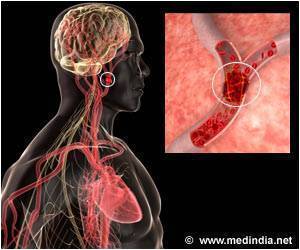The Telestroke robot allows long-distance specialists from anywhere in the country really, to virtually visit, diagnose and treat a patient on the spot.

According to Dr. Kuruvilla, stroke leads to damage of vital brain cells due to a blocked artery that supplies blood to the brain, resulting in paralysis of one side of the body. He says that strokes can be treated with the clot buster drug, a tissue plasminogen activator or t-PA, in the 'golden-hour' via TeleStroke across the country.
The biggest challenge faced by stroke neurologists all over the world is the delay in treating the patient in the prescribed window period for thrombolysis - a process to lyse or dissolve the clot with the clot buster drug preferably in the golden hour.
According to the current guidelines by international stroke organizations, a patient afflicted with stroke due to a blocked artery needs to be treated within 4.5 hours of the onset of symptoms - if he/she qualifies for the clot buster injection. Out of these 4.5 hours, the best results or outcome are seen in patients receiving this treatment in the first hour, which is known as golden hour.
In a country like India, which is highly populated, stroke or brain attack needs to be looked at in a more practical way by facilitating clot buster injection at the primary facility or hospital (e.g. District Hospital) where the patient can be easily taken to.
There is no meaning in attempting to transfer a patient from the district hospital to a tertiary medical center or medical college for want of expertise or neurologist. This transfer process will chew up the precious golden hour or more hours, so much so, that by the time he/she reaches tertiary center, the window period for treating thrombolysis promptly and effectively might be over.
Advertisement
According to Nair, telemedicine could be one major way to attack this very disabling disease in the Indian scenario.
Advertisement
Nair says that the long-distance doctor at the Aditya National TeleStroke Neuro Center can even control the robotic device, as if he or she were by the patient's bedside.
Nair and Dr. Kuruvilla have said that they have started preliminary discussions with the health ministry for ensuring greater patient access to the center. They said that there plans include a possible meeting with Prime Minister Narendra Modi to brief about the advances being made in the area of stroke management.
The Aditya National TeleStroke Neuro Center in Thiruvananthapuram is expected to receive support from Kerala Government for land and construction of a 5000 square feet building in the city. It will have 12 stroke neurologists and two scientists on its panel to take round-the-clock calls.
The robotic devices are planned to be acquired from the USA and the negotiations have already started for business collaboration.
Source-ANI















